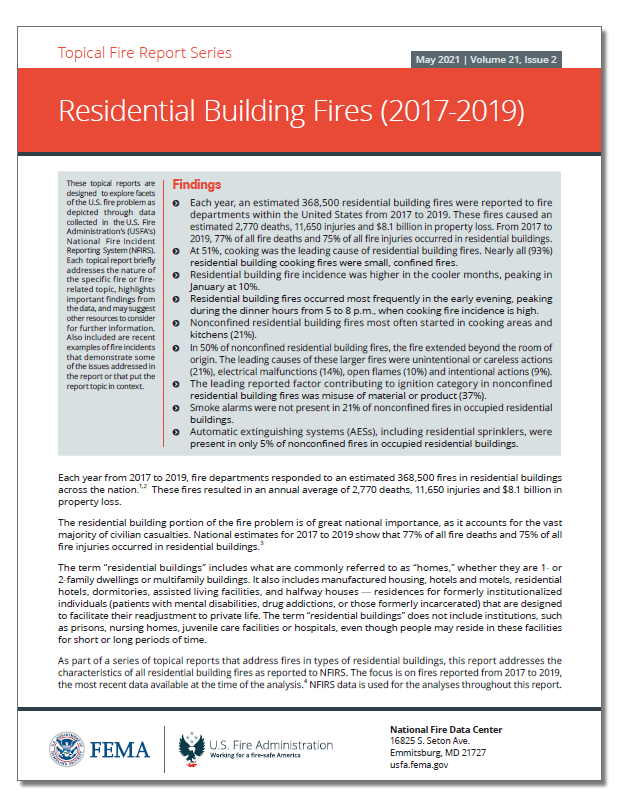|
Electrical safety is our key concern and I'm always looking out for information that will help keep the industry safe. I wanted to pass along this report from FEMA on residential building fires. Work safely.


|
Electrical safety is our key concern and I'm always looking out for information that will help keep the industry safe. I wanted to pass along this report from FEMA on residential building fires. Work safely.

FEMA's May 2021 issue on Residential Building Fires (2017 - 2019) reports that each year during this time frame, fire departments responded to an estimated 368,500 fires in residential buildings across the nation. These fires resulted in an annual average of 2,770 deaths, 11,650 injuries and $8.1 billion in property loss.
Topical Fire Report Series findings:

- From 2017 to
2019, 77% of all fire deaths and 75% of all fire injuries occurred in residential buildings.
- At 51%, cooking was the leading cause of residential building fires. Nearly all (93%)
residential building cooking fires were small, confined fires.
- Residential building fire incidence was higher in the cooler months, peaking in
January at 10%.
- Residential building fires occurred most frequently in the early evening, peaking
during the dinner hours from 5 to 8 p.m., when cooking fire incidence is high.
- Nonconfined residential building fires most often started in cooking areas and kitchens (21%).
- In 50% of nonconfined residential building fires, the fire extended beyond the room of
origin. The leading causes of these larger fires were unintentional or careless actions
(21%), electrical malfunctions (14%), open flames (10%) and intentional actions (9%).
- The leading reported factor contributing to ignition category in nonconfined
residential building fires was misuse of material or product (37%).
- Smoke alarms were not present in 21% of nonconfined fires in occupied residential
buildings.
- Automatic extinguishing systems (AESs), including residential sprinklers, were
present in only 5% of nonconfined fires in occupied residential buildings.

To read the full report click here, or on the image.
|
|

